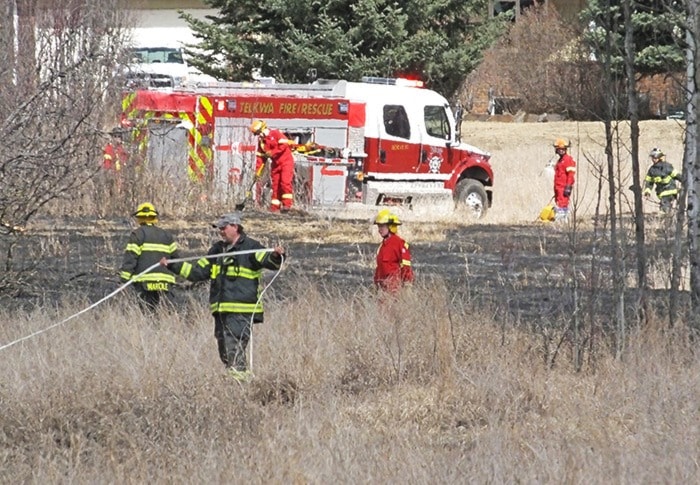Given current and predicted weather conditions, the BC Wildfire Service is encouraging the public and industry to exercise caution when doing any outdoor burning.
In April 2016, the BC Wildfire Service responded to 79 fires that ended up burning over 14,000 hectares. Given the potential for similar weather conditions this spring, the Northwest Fire Centre is preparing for an early start to the fire season.
The Bulkley Valley and Lakes areas are experiencing below-normal snowpack levels and areas of the Northwest Fire Centre are already snow-free. As the snow melts, it will not take long for the grass to dry out and become flammable, especially in windy conditions.
The BC Wildfire Service strongly recommends that anyone who conducted a Category 2 or Category 3 open burn within the last 12 months should check the burn site to ensure that the fire was completely extinguished.
No fire prohibitions were in place for the Northwest Fire Centre as of Monday. However, people wishing to light an open fire must watch for changing weather conditions and follow all burning regulations to reduce the number of preventable wildfires. They also should take the following precautions:
• Ensure that enough resources are on hand to control the fire and prevent it from escaping.
• Do not burn during windy conditions. Weather conditions can change quickly and the wind may carry embers to other combustible material and start new fires. (Wind was a key factor that affected wildfire activity in the spring of 2016.)
• Create a fireguard around the fire site by clearing away twigs, grass, leaves and other combustible material right down to the soil.
• Consider conducting smaller burns around the perimeter of the main fire site before lighting the main fire. This will create a fuel break and help prevent the fire from spreading beyond its intended size.
• Never leave a fire unattended.
• Make sure that your fire is completely extinguished and the ashes are cold to the touch before you leave the area for any length of time.
Before conducting any burn, check with the local fire department, municipality and regional district to find out if any open burning restrictions or bylaws are in effect.
Anyone planning to do any large-scale industrial burning or conduct a grass burn larger than 0.2 hectares (Category 3 fires) must obtain a burn registration number ahead of time (at no charge) by calling 1-888-797-1717. Burn registration numbers are entered in the Open Fire Tracking System.
Anyone conducting an open burn must adhere to specific requirements in the Wildfire Act and must comply with air quality control legislation. They must also always check venting conditions before lighting any fire. If the venting conditions for your area are rated "poor" or "fair", Category 2 or Category 3 open burning is restricted. The venting index can be obtained by calling 1-888-281-2992 or online: env.gov.bc.ca/epd/epdpa/venting/venting.html
If an open burn escapes and causes a wildfire, the person responsible may be held accountable for damages and fire suppression costs.
The Northwest Fire Centre extends from the Yukon Territory border in the north to Tweedsmuir Provincial Park in the south, and from the Pacific Ocean and Alaska border in the west to just east of Endako.
For more information about safe open burning practices, check the BC Wildfire Service website. To report a wildfire, unattended campfire or open burning violation, call 1-800-663-5555 toll-free or *5555 on a cellphone.
Information from the BC Wildfire Service.
